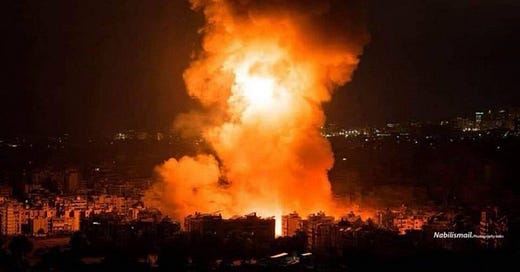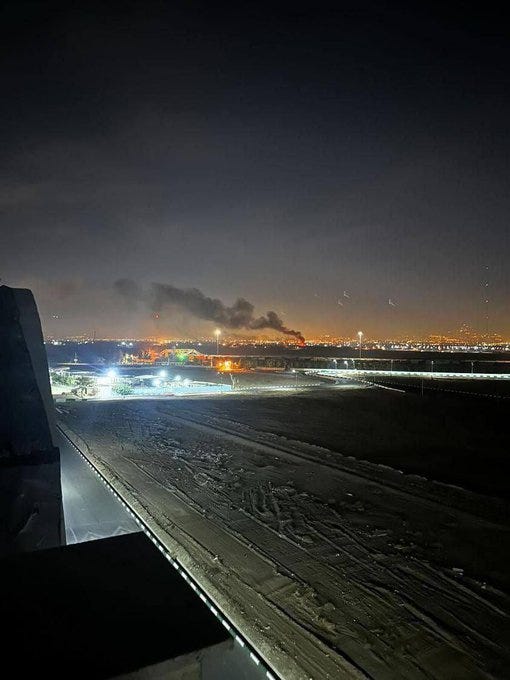Israel’s Retaliatory Strikes on Iran: A Deepening Conflict in the Middle East
Carried out in the wee hours of Saturday, the strikes seemed more meant to warn than to harm.
Israel’s Retaliatory Air Strikes on Iran
In an unprecedented escalation early Saturday morning on October 26, 2024, Israel launched a series of airstrikes against Iran, targeting military installations in Tehran and surrounding areas. This development follows Iran's ballistic missile strike on Israel on October 1, marking the second direct confrontation between the two nations within six months. The recent surge in hostilities reflects a significant turning point in Middle Eastern geopolitics, with implications extending beyond the immediate regional actors involved.
Context of Israel’s Retaliatory Strikes
The Israeli Defence Forces (IDF) have justified their actions as a necessary response to what they describe as “months of continuous attacks” from Iran. According to IDF sources, the strikes aimed to neutralise key military sites in Iran, seeking to undermine Tehran’s capacity to project military force in the region. This confrontation underscores the broader context of Iran-Israel relations, marked by long-standing ideological and geopolitical tensions, and now appearing to reach a critical threshold.
The Strikes: Tehran and Beyond
The early morning airstrikes led to a series of powerful explosions in Tehran, illuminating the sky and causing widespread concern among residents. Additional reports emerged from Karaj, a city adjacent to Tehran, indicating the broader reach of the Israeli offensive. Furthermore, Syrian state media reported simultaneous explosions in Damascus and central Syria, suggesting that Israel’s operation could encompass a wider scope targeting Iran-aligned forces and interests beyond its borders.
Regional Dimensions: Ongoing Conflicts and Escalations
The latest escalation unfolds as Israel continues its operations in Gaza and Lebanon, intensifying the multifront challenges faced by the Israeli military. Meanwhile, Iran’s long-standing influence in Syria and its alliances with groups in Lebanon, such as Hezbollah, and the Houthi rebels in South Yemen—who are supported by Iran—highlight the complex regional network Iran has established. The Houthis have intensified their activity in the strategic Red Sea, targeting civilian ships and threatening regional stability. This multifaceted conflict, spanning multiple theatres and involving both state and proxy forces, raises the stakes for both nations, compelling the international community to reassess the precarious stability in the Middle East.
Diplomatic Maneuvers: The U.S. Role and Global Implications
Notably, Israel’s offensive closely followed U.S. Secretary of State Antony Blinken’s diplomatic visit to Israel and Saudi Arabia. Blinken’s efforts aimed to mediate a ceasefire between Hamas and Israel; however, the subsequent Israeli action against Iran indicates the underlying volatility resistant to, or independent of, diplomatic intervention. The United States was reportedly informed of Israel’s plans shortly before the strikes, an indication of the strategic alignment yet delicate balance the U.S. maintains in the region.
Iran’s Response and Potential for Further Escalation
In anticipation of Israeli action, Iranian authorities had issued warnings of severe retaliation, highlighting the risk of a wider and more destructive conflict. Tehran’s response to these airstrikes will be critical in determining whether the confrontation remains contained or escalates into a prolonged exchange with devastating consequences for regional stability.
International Concerns: A Volatile Situation
The international community is closely observing the unfolding situation, with growing fears that a sustained conflict between Iran and Israel could destabilise the Middle East further. The potential for escalation in an already volatile region underscores the urgent need for renewed diplomatic engagement to prevent an unmanageable crisis.
Summing Up: A Bleakly Optimistic Outlook
While the current trajectory points towards heightened hostilities, there remains a glimmer of optimism rooted in the potential for diplomatic intervention. Both nations, grappling with internal and external pressures, may ultimately recognise the unsustainable costs of continued conflict. In an era marked by shifting alliances and unprecedented global challenges, a recalibration of hostilities might emerge as the only path to enduring stability in the Middle East. However, achieving this will require concerted efforts from regional and global actors alike, who must prioritise dialogue over destruction to forge a future less defined by conflict.





